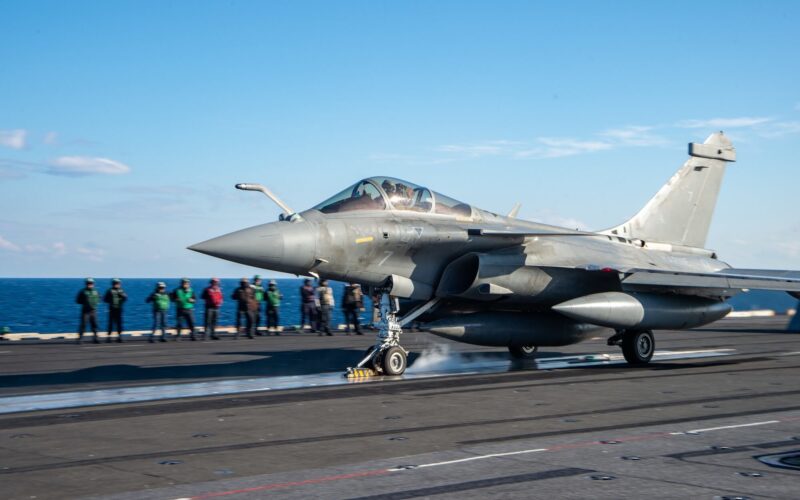The United States Department of Defense announced that a contract has been awarded to General Atomics in order to develop electromagnetic catapults for France’s new generation aircraft carrier known as PA-Ng (Porte-Avions de Nouvelle génération).
Worth around $8,83 million, this order “provides for the development of a two or three launch motor subsystem, two energy storage group tailored configuration of the Electromagnetic Aircraft Launch System (EMALS) and a three wire, six energy absorber subsystem Advanced Arresting Gear System configuration that are compatible with the government of France’s future aircraft carrier and provides acceptable mission capability,” as explained by the Pentagon notice published on August 19, 2022.
The only aircraft carrier currently in service using an EMALS is the USS Gerald R. Ford of the US Navy.
While it was initially announced that the warship would use only two catapults, a render published in April 2022 by the French Navy showed the deck of the PA-Ng in a three-catapult configuration.
The PA-Ng will feature an oblique runway that will allow for the launch and recovery of planes at the same time. The use of electromagnetic catapults, instead of steam on the Charles de Gaulle, will provide smoother catapulting of both heavier and lighter aircraft.
The mass of the carrier-capable New Generation Fighter, currently developed by France in partnership with Germany and Spain, is expected to be around 30 tons against 20 tons for the current Rafale Marine.
Lighter airframes, such as the MQ-25 Stingray unmanned aerial refueler currently being developed by Boeing for the US Navy, may also be employed. This would free up the Rafales from being used for refueling missions, preserving their service life. The 42 Rafales of the French Navy have a higher average fleet age than their Air Force counterparts, casting doubt on their availability level in the future.
The new vessel, whose construction was announced in December 2020, will be larger than the French Navy’s current flagship. It will measure over 300 meters in length and weigh 75,000 tons ‒ against 261 meters and 42,500 tons for the Charles de Gaulle. It will be powered by two nuclear steam generators with a total power of 450 Mw, instead of the current two reactors, with an output of 150 Mw each, as found on the Charles de Gaulle.
The PA-Ng is to be commissioned in 2038, the same year its predecessor is due to be retired.

